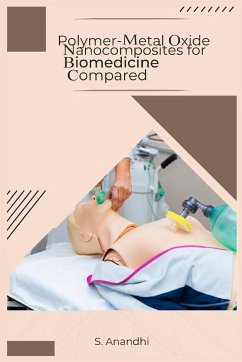Polymer-metal oxide nanocomposites have attracted immense interest in biomedical applications owing to their excellent physicochemical and mechanical properties. In this comparative study, S Anandhi evaluates the suitability of various polymer-metal oxide nanocomposites for biomedical applications. Nanocomposites are emerging as promising biomaterials for drug delivery, tissue engineering, biosensors, imaging agents, and cancer therapy, to name a few. The unique properties of nanocomposites such as high surface area, biocompatibility, and biodegradability make them attractive candidates for various biomedical applications. However, their nanoscale size raises concerns regarding their toxicity and long-term effects on human health. Hence, a comparative study of different polymer-metal oxide nanocomposites is crucial to identify the most suitable materials for biomedical applications. The study discusses the synthesis, surface modification, and characterization of polymer-metal oxide nanocomposites, including nanoparticles, metal oxides, and polymers. Different methods of nanofabrication such as sol-gel and electrospinning are also analyzed. The physicochemical and mechanical properties of these nanocomposites, such as degradation kinetics, drug release, and cellular response, are examined to evaluate their suitability for biomedical applications. The study also highlights the impact of nanocomposites on immune response, wound healing, and tissue regeneration. The nanocomposites' imaging properties, such as MRI, CT scan, X-ray, optical imaging, and photoacoustic imaging, are evaluated to identify suitable imaging agents for diagnostics and theranostics. The study also delves into the design of organ-on-a-chip and microfluidics using nanocomposites for drug discovery and toxicity screening. Furthermore, the study assesses the patentability of different polymer-metal oxide nanocomposites and provides insights into lead optimization and SAR optimization for drug design. Overall, S Anandhi's study offers valuable insights into the potential of polymer-metal oxide nanocomposites for biomedical applications. The comparative analysis of different nanocomposites helps researchers identify the most suitable materials for specific biomedical applications, considering their physicochemical properties, biocompatibility, biodegradability, and toxicity. The study also opens up new avenues for research and development of nanocomposites for regenerative medicine, cancer therapy, biosensors, and imaging agents.
Hinweis: Dieser Artikel kann nur an eine deutsche Lieferadresse ausgeliefert werden.
Hinweis: Dieser Artikel kann nur an eine deutsche Lieferadresse ausgeliefert werden.







